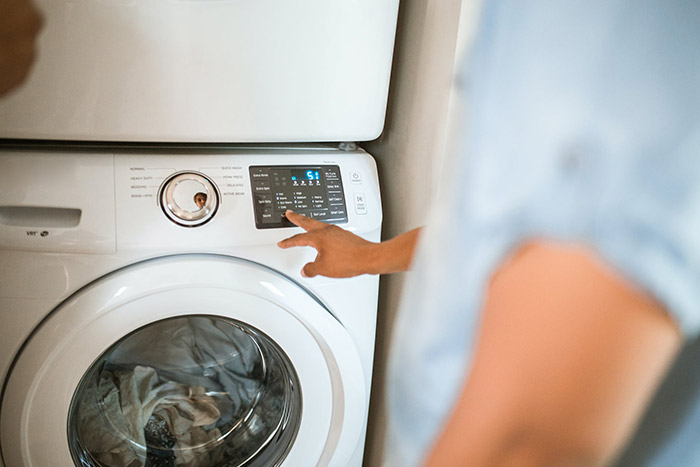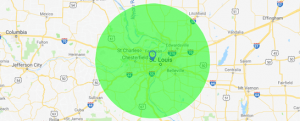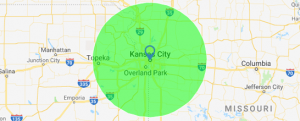Types of Washing Machines
 When it comes to doing laundry, a reliable washing machine is a must-have. However, with so many types of washing machines available on the market, it can be challenging to know which one is right for your needs.
When it comes to doing laundry, a reliable washing machine is a must-have. However, with so many types of washing machines available on the market, it can be challenging to know which one is right for your needs.
At Diamond Appliance Repair in St. Louis & Kansas City, our technicians have decades of experience with all types of washing machines — so we know which one’s are worth the investment 🙂 In this blog post, we’ll explore the various types of washing machines and their unique features. Whether you’re in the market for a new washing machine or want to know if it’s time for a repair, read on to learn more.
Top-loading Washing Machines
Top-loading washing machines are perhaps the most common type of washer, widely found in homes throughout North America. With a top-loading washer, the drum is located vertically, and clothing is loaded through a door at the top of the machine.
These machines tend to be more affordable than front-loading models, and they are often faster and simpler to repair. However, they may use more water and energy than front-loading washers, and they may not be as efficient at cleaning heavily soiled garments.
Front-loading Washing Machines
Front-loading washing machines have gained popularity in recent years due to their energy efficiency and ability to clean clothes thoroughly. Unlike top-loading washers, front-loading models feature a horizontal drum that is loaded from the front.
Front-loading machines tend to use less water and energy than top-loading washers, as well as being gentler on clothes. However, they tend to be more expensive and may require more maintenance and repair than top-loading models.
High-efficiency Washing Machines
High-efficiency washing machines are designed to use the minimum amount of water and energy required to clean your clothes. These machines may use as much as 80% less water than traditional top-loading washers, and they are also more energy-efficient.
High-efficiency washers come in both top-loading and front-loading models, and they are a great option for anyone looking to reduce their environmental footprint. However, they may take longer to complete a wash cycle than traditional washing machines.
Portable Washing Machines
Portable washing machines are ideal for those who need to do laundry in a small space, such as an apartment or RV. These machines are compact and can be easily moved from room to room. They typically work by connecting to your sink for a water source.
Portable washing machines may have limited capacity and may not be as effective at cleaning large, heavily soiled garments. However, they are convenient and affordable, making them an excellent option for those in small living spaces.
All-in-one Washing Machines
All-in-one washing machines combine a washer and dryer into a single appliance. These machines tend to be smaller in size than traditional washers and dryers, making them ideal for those with limited space.
All-in-one washing machines may take longer to complete a cycle than separate washers and dryers, may have limited capacity, and may be more prone to breakdowns. However, they can be a convenient and space-saving option for small homes or apartments.
Critical Washing Machine Components
No matter what type of washing machine you use, there are critical components that are responsible for ensuring proper functioning. These include:
Motor
The motor is responsible for powering the drum, agitator, and pump in a washing machine. It’s crucial to have a reliable and efficient motor to ensure that the machine runs smoothly.
Drum
The drum is the main component of a washing machine, where clothes are placed for cleaning. The drum rotates back and forth or up and down, allowing clothes to be agitated and thoroughly cleaned.
Agitator
The agitator inside the drum helps to move the clothes around during the wash cycle. This component can be found in top-loading washing machines and is typically located in the center of the drum.
Pump
The pump is responsible for draining water from the drum after the wash cycle. It’s an essential component that ensures the washing machine operates properly.
Control Panel
The control panel on the washing machine allows you to select the wash cycle, water temperature, and other settings. The control panel is typically located on the top of the machine and may use buttons, dials, or touchscreens.
Water Inlet Valve
The water inlet valve controls the amount of water that enters the drum during the wash and rinse cycles. A faulty water inlet valve can cause the machine to take too long to fill, leak water, or not fill up at all.
No two households’ needs are exactly alike when it comes to washing machines. After considering the types of washing machines that may work best for your household, it’s crucial to choose a reputable service provider for maintenance and repair. If you’re in the Kansas City or St. Louis areas, call Diamond Appliance Repair for dependable and efficient washing machine repairs. Our team of experienced technicians is committed to keeping your appliances running smoothly. Contact us today to learn more.
By Jeff Russel, Owner of Diamond Factory Appliance
Jeff Russel is serving the greater St. Louis and Kansas City areas. Diamond Appliance provides efficient and effective service for all your appliance repair needs. Our knowledgeable technicians are trained to diagnose and fix any type of problem affecting major appliances quickly, reliably, and cost-effectively. We work hard to ensure customer satisfaction and their many positive reviews demonstrate the quality of our services.




